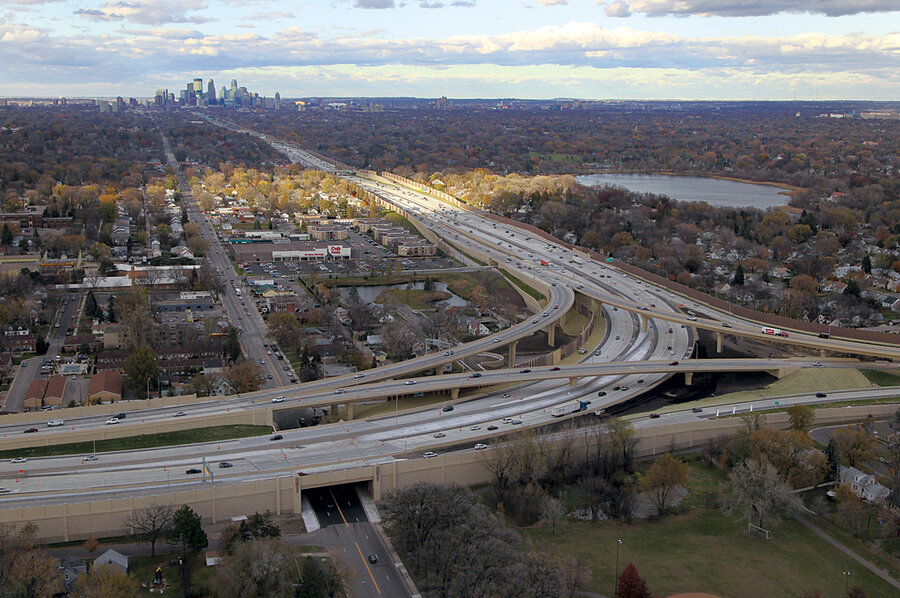Trees, meet forest
Loading...
Turn-by-turn navigation is a marvel. Enter an address into a map application by Google, Yahoo, Apple, Garmin, or half a dozen other providers. You get the exact route to an exact address on the other side of the country. You are politely reminded of the turns to take. You can zoom in and out, see topography in 3-D, overlay satellite images, and mouse along at street level.
But as with anything involving digital search, the temptation is to go right to specifics without getting the big picture. I recently used turn-by-turn navigation in an unfamiliar city in the American Midwest. In the days before the Internet, I would have bought a map. Just the process of unfolding it would have provided an overview of the geography. Filmmakers call that an establishing shot. I didn’t need that with digital navigation. The nice computer lady talked me through the city. But I had no idea where I was – or what I was traveling past – until I got there.
Paper maps are clunky, easily torn, and often out of date. Travel used to entail missed exits and guesses about direction, which meant that gas station attendants were endowed with sagelike knowledge of streets and roadside attractions. There was a serendipitous aspect to that kind of trip taking – not unlike the way flipping the pages of a newspaper or wandering the shelves of a library can turn into a magical mystery tour. Poring over a state map, you’d stumble upon a Civil War battlefield near the barbecue joint that the Texaco guy recommended.
The same thing is there digitally, of course, along with Yelp reviews and 1,700 articles about the battlefield. So don’t worry, this isn’t a paean to the good old days. It’s just that search technology too easily takes us to the very specific. We get exactly where we are going without knowing how we got there. If you’ll forgive the metaphorical leap, that’s not unlike what is happening with news – astounding access to trees but less and less attention to forests.
The Monitor tries to provide both views. We want you to understand the world in its close-up detail and in stand-back patterns. Take a recent edition of our weekly newsmagazine: Our cover story examined two landmark cases before US Supreme Court: the Defense of Marriage Act and California’s Proposition 8. The former was a 1996 attempt to set a national standard for marriage, the latter a 2008 attempt to do the same at the state level. The eventual ruling will affect individuals, families, businesses, government programs, and society as a whole.
In our Focus stories, we tightened the lens somewhat, looking at the dangers and opportunities in the Middle East as President Obama visited the region and also at the future of humans in space. An even closer-up view could be found in the articles of One Week, where we briefed you on everything from the new pope to Washington budget battles to the fishing industry in India. Serendipity might have taken you to our photo essay of Ukrainian seniors dancing. Would you have thought to search for that?
There’s much more in each issue. You could say that we publish a weekly map of the world along with a turn-by-turn guide to its rich, difficult, and often triumphant variety. If the Monitor Weekly nav works for you, we’re happy to be of service. If you think it would work for others who appreciate both trees and forests, we’d be grateful if you pointed them in our direction.
John Yemma is editor of the Monitor.








